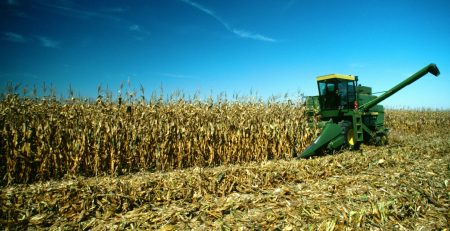China’s Increased Appetite Drives Wheat to Multi-Year Highs, What’s Behind the Developing Demand?
Wheat futures rallied this week to levels U.S. farmers haven’t seen in six years. According to Pro Farmer, wheat prices jumped Friday on rumors China was shopping for French and U.S. wheat.
The added interest from China continues to help major commodity prices, including soybeans and lean hogs, trend higher. The question many want to know is “why is China buying so much from the U.S.?” One University of Nebraska economist says the answer isn’t simple.
“Clearly, they’ve been strong buyers in the market,” says Brad Lubben, policy and extension specialist, University of Nebraska “There was hope back in January with a Phase One agreement that purchases were going to go way up. Well, you don’t ever fundamentally know from a commitment to buy, whether it translates into actual purchases.”
Lubben says COVID-19 slowed China’s appetite, however, as the economy is rebounding, China is returning to the market in a big way.
“The rate they’re buying now is certainly supportive of the positive market prices, but whether we can determine exactly what their policy is, we’ll know after the fact, and we’ll assess how much they really bought.”
Lubben says China could be buying to help rebuild its domestic reserves, or possibly to feed the growing hog herd in the country as Chinese pork producers try to recover from ASF. He says no matter what the answer is, it won’t known until after the fact.
“It’s always difficult to know what a closed economy system or a state-run economy system is doing,” he says. “It’s difficult to know what’s happening in the market until we come out after the fact and find out what really happened.”
The increased appetite from China is coming at a time when farmers are seeing impressive harvest pace. What seems to be a quick harvest may typically add pressure to commodity prices, however 2020 is proving that’s not always the case.
“This is something that shows how marketing works,” says Cory Walters of the University of Nebraska. “It’s very random. You can’t predict it. And you never know when those things are going to come.”
The marketing plans that seemed to pay off this year are the ones who held on to their crop and waited to sell. Walters says that may not be the case next year.
“There are always strategies that win,” adds Walters. “But you never know at the beginning of the year what’s going to happen; you still have to take that survival point of view.”
While Walters thinks these prices should entice more farmers to sell grain, he says leaving some bushels unpriced could help farmers who fear they will miss out on higher prices. Walter says those unpriced bushels will help farmers sell into potential future rallies.
Content within the Farm Journal Forum is the property of Farm Journal, Inc and protected by copyright.








